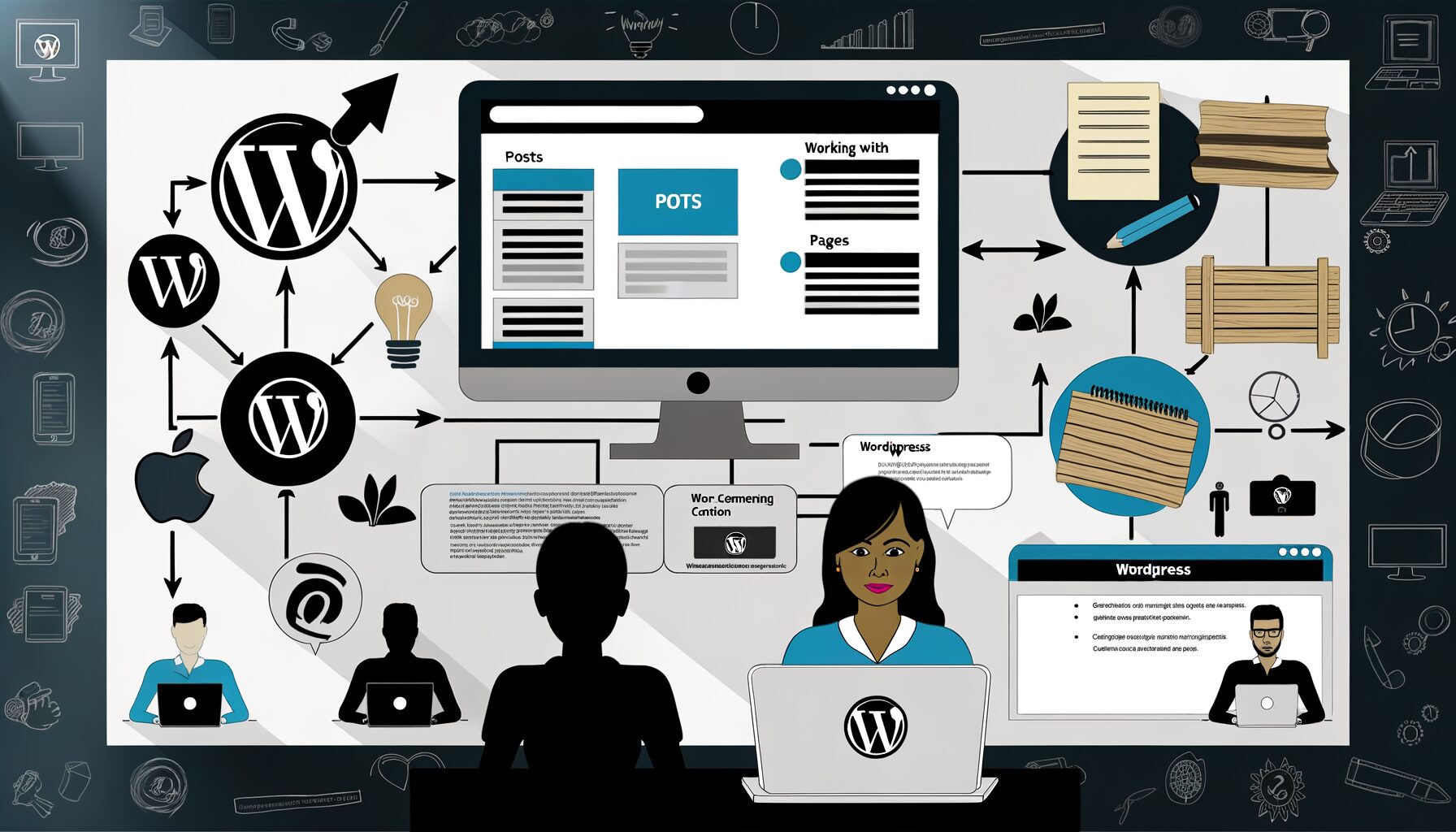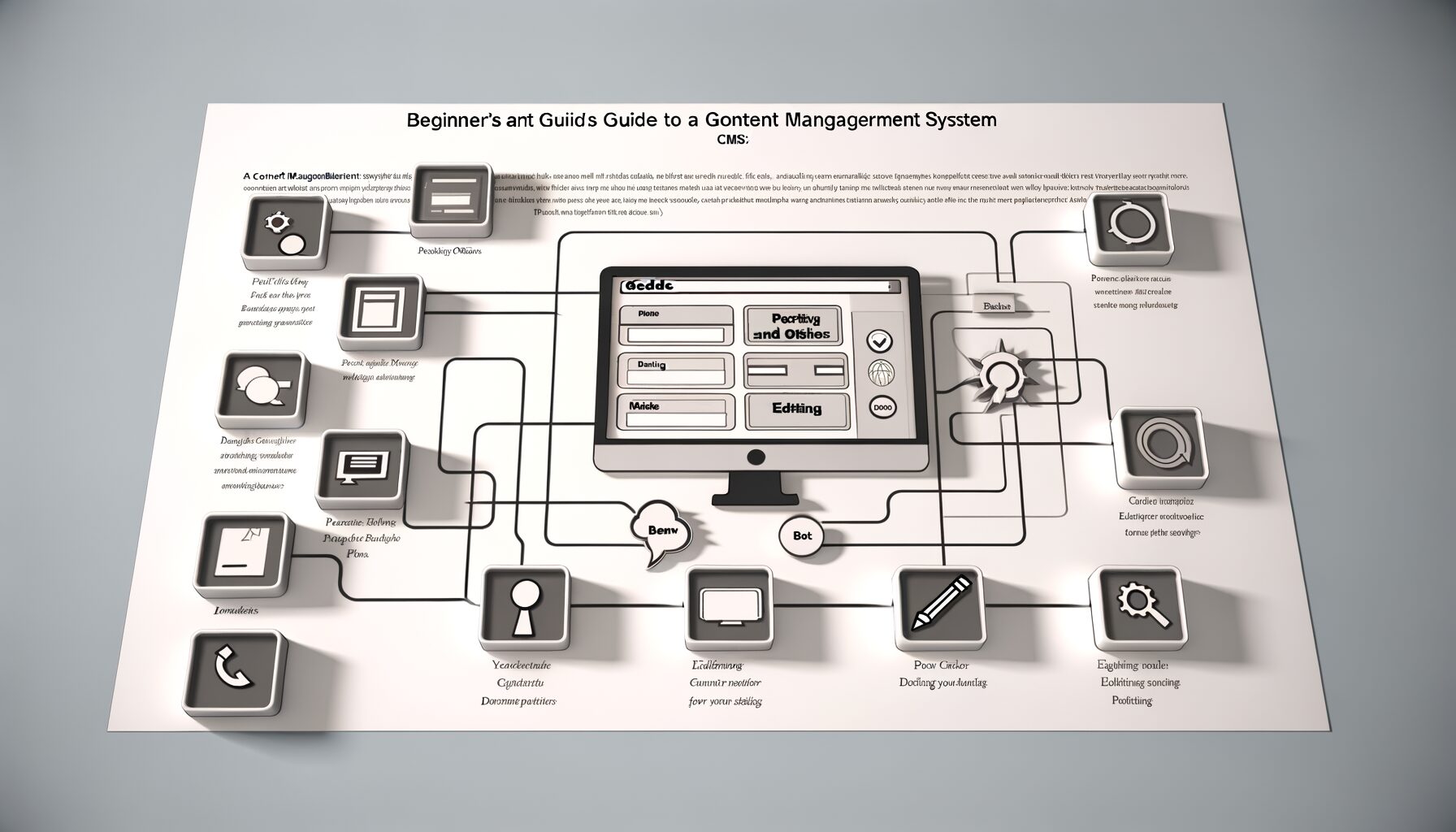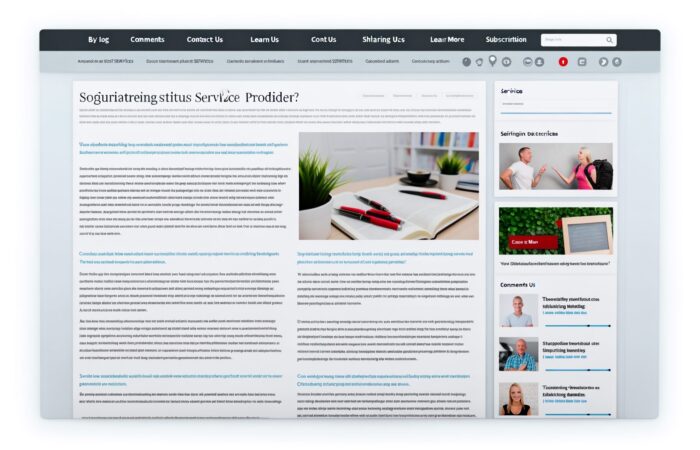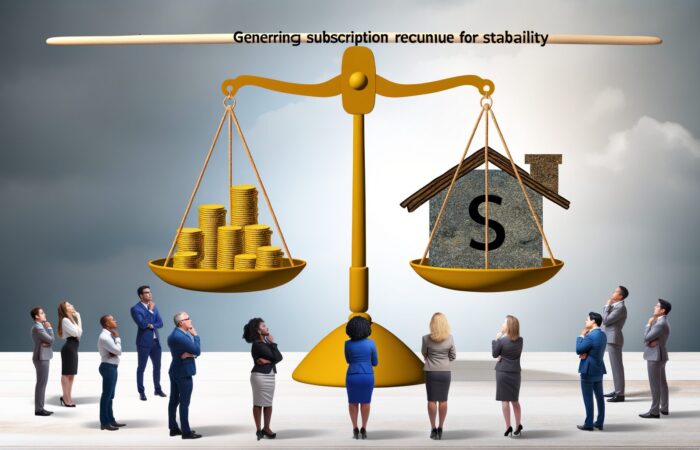Introduction to WordPress: Understanding Posts, Pages, and Content Creation
Whether you’re planning to pen down your thoughts, share your expertise, or promote your business, WordPress is an excellent platform to get started with. However, if you’re new to WordPress, terms like ‘posts’, ‘pages’ and ‘content creation’ might sound a tad bit confusing. No worries, friend — we’re here to help. Let’s break these concepts down in a clear, simple, and fun way!
Posts Vs Pages: What’s the Difference?
First things first, let’s understand the basic difference between posts and pages on WordPress. While both may seem similar, they serve very distinct purposes.
- Posts: If you think of your WordPress site like a diary, then posts are your diary entries. They are timely content and get displayed in reverse chronological order on your blog home page. Posts encourage conversation and interaction, as they usually have comment sections beneath them.
- Pages: On the other hand, pages are like the static or permanent sections of a diary — think About Me, Contact Information, etc. They are timeless entities that remain constant and don’t change with time. Pages don’t have dates or categories associated with them, and they are not listed by date.
Easy to understand, right? Now that you’ve understood posts and pages, let’s move on to the exciting part – creating content!
Creating Content: The Heart of Your WordPress Site
Content is the heart and soul of your WordPress site. It attracts audiences, engages them, and ultimately converts them into followers, clients, or customers. Hence, mastering content creation is crucial for the success of your WordPress journey. Here are a few tips to help you create stellar content:
- Know Your Audience: Understanding who you’re writing for is the first step towards creating content that resonates. Make sure your content meets the needs, interests, and preferences of your target audience.
- Create Quality Content: Quality is king in content creation. Ensure your posts and pages are well-researched, well-written, and provide value to your readers.
- Visual Appeal: Don’t underestimate the power of visually attractive content. Use images, infographics, videos etc., to make your content more engaging and readable.
- Consistency is Key: Consistently posting quality content will keep your readers coming back for more. Make a content schedule and stick to it.
There you go! With these basics in place, you’re now geared to start your content creation journey on WordPress. Remember, the learning curve might seem steep initially, but with practice, you’ll be a WordPress whiz before you know it.
Setting Up Your WordPress Site: Essential Steps Before Posting
Choose the Right Domain and Hosting
First things first: you need an online address and a place that stores your site’s data. That’s where domain names and hosting services come in.
Choosing a domain is a crucial first step. It needs to reflect your brand, be easy to remember, and be SEO-friendly. There are various sites where you can purchase a domain, like GoDaddy, Bluehost, or WordPress.com itself.
When it comes to hosting, WordPress recommends Bluehost, DreamHost, and SiteGround. But always research to find the hosting service that best suits your needs.
Select a WordPress Theme
Next, let’s talk aesthetics. The WordPress theme you select will dictate the look and feel of your site. WordPress offers thousands of free and premium themes, so choose one that aligns with your brand, is responsive for mobile users, and offers the features you need.
Install Essential Plugins
Plugins are like little apps for your website. They can add a range of features, from SEO tools to security measures. Here are a few you might find useful:
- Yoast SEO: This plugin guides you in optimizing your posts and pages for search engines.
- Wordfence Security: This gives your site an extra layer of protection from hackers and malware.
- WP Super Cache: This tool helps your site load faster by creating static HTML pages of your dynamic WordPress site.
Configure Your Settings
Before you start blogging, take some time to go through your WordPress settings. Pay particular attention to your permalinks settings. You want your URLs to be clean and readable.
Under ‘Settings’, choose ‘Permalinks’ and select ‘Post name’. This will make your post URLs look like this: ‘yourdomain.com/post-name’, which is much cleaner and more SEO-friendly than the default setting.
Plan Your Content
Last but not least, plan your content. Before you even begin creating posts and pages, have an idea of what you want to say, how you want to say it, and to whom you want to say it. Successful websites are all about delivering quality, relevant content to their audience.
So, there you have it: the essential steps to set up your WordPress site. Remember, the key to a successful website is planning. Take the time to get these basics right, and you’ll be well on your way to a fantastic WordPress site.
The Art of Mastering WordPress Posts: Tips for Effective Blogging
Folks, let’s talk about something that’s on every WordPress blogger’s mind – how to master the art of creating captivating WordPress posts! It’s the heart of any blog, the meat and potatoes, the main event. Your post is where you tell your story, share your wisdom, or offer your unique perspective. Let’s dive into some practical tips to make your posts shine!
Catchy Titles and Compelling Content
First things first: your blog post title is your hook. It’s your first impression, the bait that lures in your reader. Make it catchy, enticing and informative. Make sure it gives a clear idea of what your post is about. And then, follow it up with compelling, engaging content that delivers on the promise of your title. Remember, content is king. Deliver value to your readers and they’ll keep coming back!
Make Your Post Scannable
Here’s a hard truth: the majority of readers do not read every single word of a blog post. Instead, they scan it. Make it easy for them by breaking up your post into short paragraphs and using subheadings to highlight key points. Lists, like bullet points or numbered lists, are also great for making information easily digestible.
Use of Images and Media
A picture is worth a thousand words – and this is especially true when it comes to blogging. Visuals can grab attention, illustrate points, and break up large blocks of text. However, remember to only use images that you have the rights to use, and always provide proper attribution.
Integrate Links
Adding internal and external links in your blog posts does two things. First, it helps to boost your SEO. Second, it provides more value to your readers by pointing them to additional relevant content. Just remember not to overdo it — too many links can make a post look spammy.
Engage with Your Readers
Finally, don’t forget the ‘social’ aspect of blogging. Invite your readers to leave comments, ask questions, or share your posts on social media. Respond to their comments to create a sense of community. Engagement is key to building an active and loyal audience.
Mastering the art of creating WordPress posts requires practice, but with these tips in mind, you’re well on your way to becoming a more effective blogger. Remember, every great blogger started somewhere. So, give yourself the freedom to learn, grow, and improve. Happy blogging!
Optimizing WordPress Pages: The Best Practices for Static Content
Have you ever wondered how to get the most out of your WordPress pages? You’re not alone! Many people are unsure of the best practices to optimize their static content. Fear not! We’re here to guide you through this journey and provide you with some handy tips on making your WordPress pages shine.
Understanding Static Content
First things first, let’s clarify what we mean by static content. This refers to content that doesn’t change very often, like your About or Contact pages. They’re an integral part of your website, providing key information and serving as a constant touchpoint for your visitors.
Optimal Page Structure
Now, let’s talk about structure. A well-structured page is not only appealing to your visitors but also to search engines. Here’s a simple checklist:
- Use appropriate H1 and H2 headings, and make sure the H1 title is unique to each page.
- Short paragraphs and bullet points can make your content easier to read.
- Include internal and external links where relevant, but avoid overloading your page with them.
Quality Content is Key
Remember, quality content is at the heart of any successful WordPress page. It should be relevant, unique, and engaging. Ask yourself: Is my content providing value? Is it answering the questions my visitors might have? If the answer is yes, you’re on the right track!
SEO is Your Friend
SEO, or Search Engine Optimization, isn’t just for posts – it’s crucial for your static pages too. High-quality keywords, meta descriptions, and SEO-friendly URLs can all increase your visibility on search engines. So take the time to do keyword research and include those keywords naturally in your content and meta descriptions.
Consider Load Times
Did you know that a one-second delay in page load time can lead to a 7% loss in conversions? Every second counts! Optimizing images, reducing the number of plugins, and using a good hosting provider can all help to reduce your load times.
Make Use of WordPress Features
Finally, remember to make full use of the features WordPress offers. The Page Attributes feature allows you to set parent pages and templates, while the Featured Image function lets you set an image that represents each page. Don’t forget to also use the Excerpt feature to provide a brief summary of your page for your readers.
Optimizing your WordPress pages might seem like a daunting task, but with these best practices in hand, you’re well on your way to creating static content that both your visitors and search engines will love. Happy optimizing!
The Role of SEO in WordPress Content Creation
We’ve got a major topic to dig into today: Search Engine Optimization (SEO). You’ve probably heard the term thrown around, but what does it really mean? And more importantly, how can it impact your WordPress site?
SEO is essentially the art and science of making your content discoverable by search engines, and thus, your target audience. It’s all about leading the right people to your website by optimizing your content. Sounds essential, right? You bet! So, let’s dive into how SEO plays a critical role in WordPress content creation.
Keywords: The Heartbeat of SEO
When it comes to SEO, keywords are king. These are the terms that your potential readers are typing into search engines. By incorporating these keywords naturally into your content, you’ll increase your chances of being discovered.
For instance, if you’re blogging about vegan recipes, keywords might include “quick vegan recipes”, “vegan meal prep”, or “vegan-friendly desserts”. Use these keywords in your post titles, headings, and throughout your content to enhance visibility.
Meta Descriptions and Title Tags
Another crucial aspect of SEO is the use of meta descriptions and title tags. These pieces of information tell search engines (and users) what your content is about at a glance. They’re like mini advertisements for your content, and if written compellingly, can boost click-through rates.
- Meta descriptions: A short summary of your page content. Though not a direct ranking factor, a well-written meta description can entice users to click on your link.
- Title tags: The title of your page as it appears in search engine results. This is a major ranking factor so include your primary keyword here.
Quality Content: The Soul of SEO
While keywords and meta tags play a big role in SEO, nothing beats quality content. Remember, search engine algorithms are designed to provide users with the best possible results for their queries. If you’re producing high-quality, relevant, and valuable content, you’ll naturally rise in search engine rankings.
So, focus on creating content that provides real value to your readers. This not only improves your SEO but also builds trust and credibility with your audience.
To sum up, SEO is a powerful tool in your WordPress content creation toolbox. By mastering the art of keywords, meta descriptions, and quality content, you can boost your visibility, drive more traffic to your site, and ultimately, win more conversions. So get out there and start optimizing!
Engaging Multimedia Elements: Enhancing Posts and Pages
Welcome to the world of WordPress media! If you’re serious about making your content pop and engaging your audience, you can’t ignore the power of multimedia. These dynamic elements can turn your posts and pages from average to engaging, helping you net more reads and comments, and keeping your readers coming back for more.
Adding Images: A Picture is Worth a Thousand Words
Images are incredibly powerful. They catch the eye, express complex ideas quickly, and add depth and context to your posts. WordPress makes it easy to add images to your content. When you’re in the editor, just click the ‘Add Media’ button, upload your image, and voila! Your post is now more engaging.
- Use high-quality, relevant images. Blurry or unrelated pictures can make your content seem unprofessional.
- Don’t forget to add alt text. This helps with accessibility and SEO.
- Try to avoid using too many images. A post that’s too image-heavy can be slow to load and may frustrate readers.
Embedding Videos: Show, Don’t Tell
Videos can be a fantastic way to supplement your content. Whether it’s a tutorial, a product demo, or just a fun clip, videos can add a whole new dimension to your posts and pages. WordPress makes it easy to embed videos from sites like YouTube and Vimeo. Just paste the video’s URL into the editor, and WordPress will do the rest.
- Ensure your video is mobile-friendly. Many visitors will be reading from a smartphone or tablet.
- As with images, remember to add alt text for accessibility and SEO.
- Don’t rely solely on video. Not everyone can or wants to watch videos, so be sure to provide text content as well.
Audio and Podcasts: Engage the Ears
Audio content is booming in popularity. Podcasts, music clips, and other audio can be a great way to enhance your posts. WordPress allows you to embed audio easily – just click on ‘Add Media’, upload your audio file, and you’re good to go.
- Make sure your audio is clear and easy to understand. If necessary, consider using a professional microphone or recording software.
- Use a transcript. This not only helps those who can’t or don’t want to listen to the audio, but it’s also great for SEO.
Remember, effective multimedia usage is about enhancing your content, not overpowering it. Use these elements sparingly and strategically to support your content. Happy multimedia-ing!
Advanced WordPress Tools and Plugins for Content Optimization
Let’s dive into the world of WordPress tools and plugins that are designed to supercharge your content and make your site more engaging for your visitors. With so many options available, it can feel a bit overwhelming, but don’t fret. We’re here to guide you!
WordPress Tools
WordPress offers a variety of built-in tools that can help to optimize your content. Let’s look at a few.
Block Editor (Gutenberg)
First off, we have the Block Editor, also known as Gutenberg. This tool allows you to create content in blocks, making it easy to organize and format your content. You can add images, text, quotes, and even embed videos and tweets!
Custom Fields
Next up are Custom Fields. These are a powerful feature that allows you to add additional information to your posts and pages. This could be anything from a simple text box to a complex form.
Screen Options
Don’t forget about Screen Options. This handy tool lets you customize the WordPress admin to better suit your workflow, hiding the features you don’t use and displaying the ones you do.
Plugins for Content Optimization
Plugins are where the real magic happens. They extend the functionality of WordPress and can make a world of difference in optimizing your content. Here are some absolute must-haves.
Yoast SEO
One of the most popular plugins, Yoast SEO, is a complete SEO powerhouse. It helps you to optimize your posts and pages, offering real-time feedback on your SEO score and readability.
Jetpack
Jetpack is another brilliant plugin. It offers a suite of powerful features including image optimization, downtime monitoring, and even social sharing tools. It’s like having your own personal WordPress assistant.
Grammarly
Finally, there’s Grammarly. It’s not a WordPress-specific plugin, but it’s a lifesaver for creating flawless content. It checks your spelling, grammar, and even suggests improvements for clarity and engagement.
In summary, WordPress tools and plugins are an absolute game-changer when it comes to content optimization. They can help improve readability, SEO score, and overall user experience. So, don’t be afraid to explore and experiment.











No Comment! Be the first one.